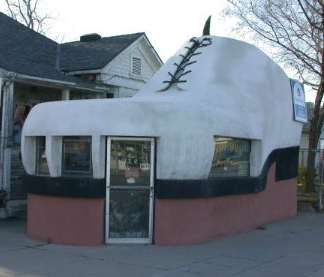 Shoe repair as a business is attractive in stable demand. He grew out of a traditional shoe craft thanks to increase labor productivity, the introduction of technological consumables.
Shoe repair as a business is attractive in stable demand. He grew out of a traditional shoe craft thanks to increase labor productivity, the introduction of technological consumables.
And yet, in the language of macroeconomics, the demand for his services is constant, but inelastic. However, different categories of the population (this will be discussed below) use its services with varying intensity. Although not a highly profitable business, it is well structured. Various types of workshops cover almost all city blocks.
You can register them as an IP or in the form of LLC (which is less common). Licensing is not required for such activities. According to various sources, market volume determined by different numbers. In particular, the Russian market for shoe repair is officially estimated by specialists at about $ 400 million per year. According to unofficial information, its turnover is one and a half to two times higher.
There is a positive trend: over the past decade and a half, it has been demonstrating good momentum, giving rise to new organizational forms.
Demand and cyclical wear of shoes
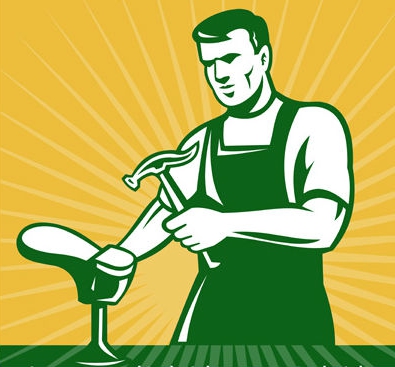 How to measure such an intangible category as the demand for shoe repair related to the macroeconomic situation of pure competition?
How to measure such an intangible category as the demand for shoe repair related to the macroeconomic situation of pure competition?
However, this is worth doing, since opening a shoe repair without appreciating the demand for it is at least reckless. Let's start with statistics on the need for shoes to repair in the process of wearing them.
It is characteristic that a small part of the shoe needs to be repaired already in the first year of its operation by citizens (we are guided by well-known statistics in our reasoning). Every 10th pair of CIS footwear sins this to the same extent as imported economy-class shoes. With expensive shoes, the situation is better, only one out of 30 pairs “gives a weak spot” in the first year of its socks.
However, after 2 years of operation, the likelihood of minor shoe repairs (meaning both Russian and foreign) will be already 20-30%. 2.5 years after the purchase of shoes, more than 50% of its owners turn to repair already.
In a word, the demand for shoe repair, like entropy in physics, does not objectively decrease. However, the shoemaker entrepreneur has yet to learn how to use this factor. This does not mean that, having entered the business, he will immediately receive a non-decreasing conjuncture. Because, if marriage is present in his work, the demand of customers for his services, of course, "will fall below the waterline."
Demand and social groups
The main consumer of shoemaker services is the middle class. These people, buying shoes for themselves, are not subject to purely price competition. That is, they do not run around dubious outlets in search of what will be cheaper. They have another selection criterion - price / quality ratio. The motivation to carry shoes for repair is simple: shoes with a cost of $ 150 and more are more profitable to repair than buy a new one.
Shoe repair as a business did not pass by rich Russians. According to the same statistics, the common myth that wealthy people do not repair expensive shoes in principle, but immediately rush to buy a replacement, has nothing to do with the truth. Nothing of the kind, if the cost of shoes exceeds $ 500, then in order to eliminate defects obtained during operation, its owners in 75% of cases resort to high-tech elite repair services.
As you can see, shoes are repaired in different ways: artisanal, standard and elite.Moreover, each repair has its own market value. Accordingly, the business plan for shoe repair will be different depending on the type of shoe shop, the range of services it provides, and the objective cost of client applications. The basics of business planning for an economical, medium and high-end shoe workshop format will be discussed below.
However, it should be recognized that some citizens stubbornly do not become customers of shoemakers. No matter how the cobblers develop their business, such clients will not go to them. This is typical of citizens who prefer to wear economy-class shoes worth about 300 rubles. To repair it is unprofitable in principle. After all, about the same price will cost them the purchase of a new pair.
Forms of business and its profitability
As we already had the opportunity to make sure, modern shoe repair as a business has given rise to three forms of workshop organization: traditional (economy class), medium type and elite format. This is not abstract information. Invariably, an entrepreneur who has decided to enter the shoe business will face a dilemma: what type of store should he open?
It is logical that the criterion of his choice will objectively become the amount of initial investment that he is ready to make as the founder of the business. $ 10 thousand will be required for the economy format, about $ 100 thousand for the average and, finally, more than $ 200 thousand for the premium format (repair of elite shoes).
If the economy level is in the field of crafts and provides only a living wage, then the next two are already reaching a certain level of profitability. Based on the most common medium format of the workshop, it is able to demonstrate profitability at the level of 15%, which will ensure the return on costs of the founder after 3 years.
The premium class has a small share in the Russian shoe market (less than 1%). However, if it turns out to establish such an enterprise, then 10% of profitability will provide the entrepreneur with a return on investment for 5 years with an appropriate level of administration. The reason for the lag in profitability from the average type of workshops is obvious: to open a premium workshop, you need to invest twice as much money as in the average. Elite craftsmen will have to maintain a higher order of technology than their mid-range counterparts.
Economy Entrepreneurship
This is a classic, traditional type of shoe workshop, smoothly moving into the 21st century from the Soviet era without obvious changes. The entrepreneur is registered as an individual entrepreneur. Such a business is located in a fairly simple room: a kiosk, a small room with an area of about 8 square meters.
Initial investments in such a business, firstly, include the purchase of the kiosk itself (100 - 120 thousand rubles), and secondly, the lease of land from local authorities (2 thousand rubles per month for 8 square meters) and the organizational design of private entrepreneurship. In total, these costs will amount to $ 8 thousand.
Shoe repair as a business in economy form involves a simple shoe machine, the cost of which is about 20 thousand rubles. The shoemaker will also need a sharpener, an electric drill, an electric stove (to heat the glue), a shoe “paw”, a shoe gun, and a number of other smaller tools.
The list of services of the economy class workshop is quite limited: repairing and replacing heels, treads, arch support, soles, zippers and locks, replacing insoles, stitching and dyeing of shoes, installation of prevention.
Basically, one person is engaged in such a business, being in the status of an entrepreneur. During the working day, the shoemaker serves 15-20 customers, which brings him daily earnings of 3-4 thousand rubles. This takes into account the daily costs of spare parts for shoe repair, amounting to 1 thousand rubles.
"Golden mean"
This is the most common form of organizing the shoe business. It requires more significant investments, about $ 100 thousand.Usually, the “average” entrepreneur seeks to get the maximum possible functionality for shoemaking.
However, he could not afford new equipment, since it was limited in funds. Entrepreneurship at an average level is usually formed in the form of LLC. Equipment for a shoe repair shop is purchased. Its price is $ 10 thousand for Russian machine tools, $ 60 thousand for used European ones. For comparison, the price of imported equipment delivered from the manufacturing plant is $ 80 thousand.
At a minimum, a burner (from 2.5 thousand rubles), a compressor (from 29 thousand rubles), a processing machine (40 thousand rubles), a sewing machine (from 5 thousand rubles) will be needed.
Unlike a one-time investment in equipment, fixed costs are the rental of specially equipped basements or shoe shops of the Soviet era, as well as the purchase of consumables used in the repair of shoes. An average shoe repair shop is one and a half times more productive than the same cheap type establishment.
In addition, a more technological repair allows for the restoration of shoes. At the same time, the cost of its consumables is also higher. This is already a professional repair made by professional equipment. The staff of such a workshop usually consists of 2-3 craftsmen and a shoe receiver. In the third year of operation, the business reaches a stable profitability of $ 35 thousand per year.
Premium Repair
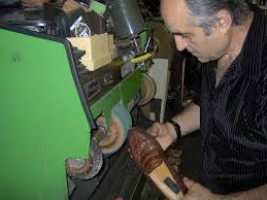 The VIP workshop is opened in fashionable neighborhoods. There are very few such enterprises. Customers who buy shoes for more than $ 500 understand that for a quality restoration it is necessary to apply for repairs of this class.
The VIP workshop is opened in fashionable neighborhoods. There are very few such enterprises. Customers who buy shoes for more than $ 500 understand that for a quality restoration it is necessary to apply for repairs of this class.
Premium shoe repair shop is a capital-intensive investment. To open it, more significant initial investments of $ 200 thousand are required. To pay back the invested funds, a workshop of this type will take 5 years.
There are no random people, real professionals work. The premium workshop is usually equipped with the same technologies that are used by leading shoe brands in production. Repair of luxury shoes involves an individual approach to each client.
Work with providers
A shoe repair entrepreneur must consider the prices and quality of repair supplies. Buying them, he becomes the subject of the relevant market. It, like most existing markets, is structured.
The largest players on it organized network warehouses stores. In Moscow, for example, such are the companies such as the League of Professional Stores Bashmachnik and Oktopus SMS. Each of them has its own corporate website, where an interested entrepreneur will see the coordinates of the nearest chain store and find out his phone number.
Thanks to these networkers, the brands Borisshoes, Casali, Caster, Coimbra, DM, Hosbo, Riera, Topy, TRG are becoming more accessible to shoe entrepreneurs. Also, warehouses and stores presented the products of "Architak", "Ozёn Iplik", "Pilot PU", "Vibram", "Iskozh", "KIP Ivanovo".
The assortment of network providers is encouraging; even the most incredible business idea can be provided with their consumables. Shoe repair in their person receives not only suppliers, but also consultants. They will help you choose from the 800 types of heels exactly the one that turns out to be optimal. Managers are able to advise potential buyers in any mode.
Activity accounting
Work in the shoe business involves constant accounting:
- receipts of parts and materials to the warehouse;
- spent on repair materials;
- client applications;
- work performed;
- customers, parts, materials;
- Money.
As entrepreneurs themselves testify, in order to establish this accounting, there is no need for special programs, but rather universal features of the Excel spreadsheet.Such accounting in a repair shop, when an entrepreneur enters such information in a tabular form daily using a computer, helps him to further manage his business more effectively. This comes from the digitally derived dynamics of entrepreneurial activity. Thanks to such documentation, the entrepreneur can clearly see what actions brought a positive effect, and, on the contrary, “failed” actions become noticeable.
Shoe business advertising
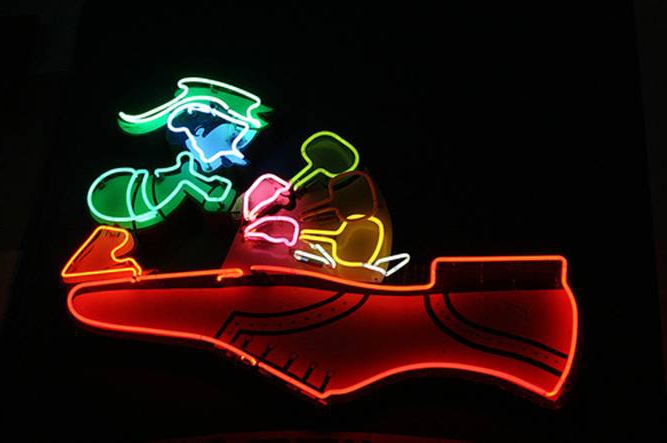 Business (shoe repair including) is significantly revived thanks to successful advertising. However, the source of the most significant advertising is the quality work performed by the master.
Business (shoe repair including) is significantly revived thanks to successful advertising. However, the source of the most significant advertising is the quality work performed by the master.
In this case, it is customary to talk about triggering a word of mouth. That is, people report a good master to acquaintances, and they already turn to him.
The successful advertising steps of entrepreneurs include a conspicuous original sign. Technology is also starting to help the shoe business. In order to make the advertising more dynamic, medium-sized workshops order a professional website from webmasters to communicate with customers. The cost of its manufacture is $ 250.
The advanced technologies of the shoe business are increasingly including a tool such as a discount card. As a rule, it is enough to order the production of 150 such cards. Why is it profitable to do? As practice shows, this step is mutually beneficial: the client receives a discount of 5% to 15% depending on the importance of his orders, and the shoemaker “ties” prospective customers to his business.
In this case, accounting in the repair shop for revenue is not done according to customer analytics, but in the context of discount cards. Moreover, often the owner of the card passes it to his friends (in this case, it becomes obvious the acquisition of another client), which reflects an increase in customer demand for services.
Conclusion
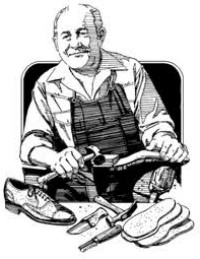 The shoe repair business is now increasingly starting to move away from the stereotypical kiosk with a dimly lit lamp. The question "how to open shoe repair" and today has not lost its relevance.
The shoe repair business is now increasingly starting to move away from the stereotypical kiosk with a dimly lit lamp. The question "how to open shoe repair" and today has not lost its relevance.
True, economy-class workshops are not uncommon, but the “medium format” equipped with a full-fledged set of equipment is already beginning to prevail. Shoemakers entrepreneurs are actively using the Internet for their professional purposes, both for purchasing supplies and for communicating with customers.
Traditional technologies seamlessly coexist with traditional technology, such as discount cards. Thus, the client receives an economic interest in being served by “his master”.
As you can see, progress does not stand still. Who knows if in the future master shoemakers will replace their machines with 3D printers?








